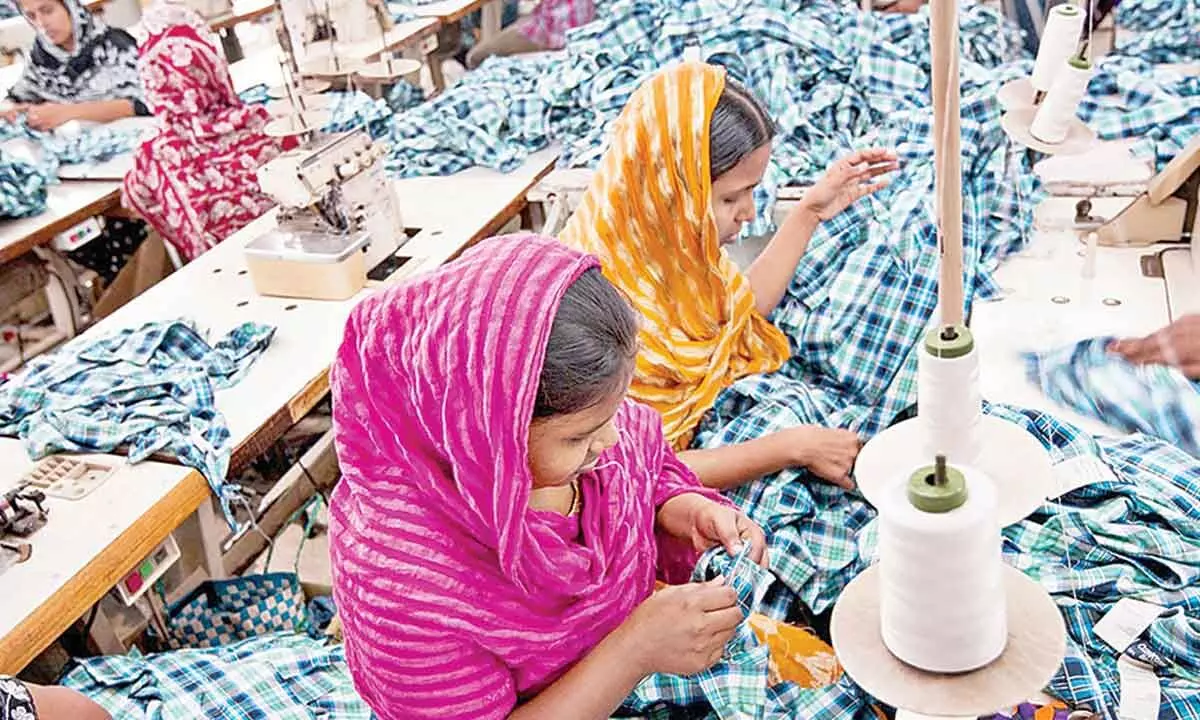A decade of textile industry empowerment
India gears up for upcoming elections, with forecasts favouring Modi's third term. The next five years promises a boost for the textile industry and national development
image for illustrative purpose

India is ready for the dance of democracy (upcoming elections) and as most of the report predicts, the Modi government will have its third term. And we can believe that the next five years will be another push for our textile industry and the overall development of the nation.
If we look back to the 10 years of the government and are textile industry, it is not wrong to say that the textile industry was one of the focused areas of the government. There are several examples which show the government has supported the textile industry and the support has increased over the years.
The most important factor was the involvement of the Prime Minister Narendra Modi in the industry. It was the first time in history ever that a delegation of the textile industry from across India was invited at the residence of the Prime Minister and PM interacted with them to understand the various aspects and needs of the industry. And we should not forget the package of more than 6,000 crores to the industry at the most critical juncture when the industry facing a lot of challenges. Such a huge package was also the first ever in the industry.
And if we see the leadership, after the Santosh Gangwar, Smriti Irani and later the Piyush Goyal took charge of the Textile Ministry. Piyush Goyal, one of the most capable person in the cabinet proved most active and accessible textile minister and things have improved on the ground level also.
Industry must have remembered at the Textiles India event 2017 in Gandhi Nagar (Gujarat) and the most recent event Bharat Tax, Delhi. The difference between both the events and the vision, and execution on the ground level was clearly visible in how the ministry and stakeholders have beautifully worked together for the development of the textile trade.
India’s textile and clothing exports has not much increased in the last 7-8 years or there is just a nominal increase but one can’t blame the government or policies as the international things like Covid, and war after war situations were in nobody’s control.
The industry should be thankful to the government for the FTAs with Australia, with UAE and the most recent EFTA deal. These things will show the result in the coming years and this market will play a significant role in increasing India's textile and clothing exports also.
Policy reforms like more focus on skill development, GST and quality control orders, focus on digitalisation, developing startup as a culture, and improvement of infrastructures are also some of the significant factors that contributed to the growth of the industry to make it more organized to make, more competitive and to survive in any unprecedented scenario.
Schemes like PLI, PM Mitra Park are also going to be instrumental for the growth of the industry.
The government in the last decade also focused North East, though the results may not be as effective but it was good at the local craft, and handlooms were also the focus of the government as these things do have deep roots in India’s textile strengths.
The way International companies in manufacturing as well as retail have entered India in the last 10 years, is remarkable and one can hope that many more brands many more companies will come to India and invest in the next 5 years also.
The pro-activeness of the centre government in the last 10 years has also motivated various states to come up with favourable policies to give a red carpet welcome to the investors and serve the best at the policy level as well as day-to-day execution level. The states’ initiative of giving subsidies and quick support shows that the states have also realised how important the textile industry is for them, not only from an investment perspective but also from the aspect of employment generation. Of course as usual, things will be more complicated more challenging in the future but industry stakeholders are assured that the policies, their execution and the leadership at the top level are here to support, for hand holding and make sure the every of required for the growth of king and economy.
(The author owns a garment manufacturing setup in a rural area, which employs mostly women workers)

